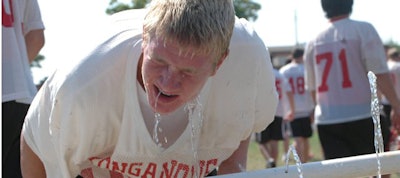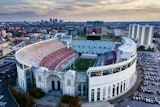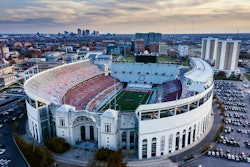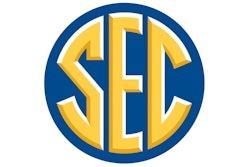August is still months away, but the Georgia High School Association has already made sweeping changes in an effort to keep football players safer at practices during the hottest days of the year. To demonstrate how serious the organization is about this, schools in violation of the new mandates face fines of up to $1,000.
On Monday, the GHSA's executive committee voted to adopt new policies stipulating that all football teams must require every player to undergo a five-day acclimatization period during which players work out in shorts and helmets before donning full pads. Three-a-day practices are banned, and two-a-day practices cannot take place on consecutive days or exceed five hours in a single day; a three-hour rest period is mandatory between the two sessions. Single practice sessions, meanwhile, may last no longer than three hours.
Schools also are to utilize the Wet Bulb Globe Temperature index (WBGT) - not just heat-index readings - when assessing whether practice conditions are safe. WBGT produces a composite temperature used to estimate the effect of actual temperature, humidity, wind speed and solar radiation on players. There is an increase in the number of exertional heat injuries when the WBGT reaches about 82 degrees, researchers say.
Georgia joins Connecticut, New Jersey, North Carolina and Texas as states that have within the past year adopted recommendations from the "Preseason Heat-Acclimatization Guidelines for Secondary School Athletics," published in the June 2009 issue of the National Athletic Trainers' Association's Journal of Athletic Training. Previously, the GHSA's heat policy stated that every school was required to monitor the environment, but there was no guideline as to the type of device used to measure weather conditions, the length of practice duration or the number of practice sessions. In addition, there were no guidelines dictating these items as they relate to acclimatization or heat stress.
"We want to make sure that all the kids are out in the sun with moderate levels of practices without the heavy equipment, so they get used to [the] outdoors,'' GHSA executive director Ralph Swearngin told The Atlanta Journal-Constitution. "Research has shown there are times when players are most vulnerable.''
Those times are usually during morning practices during the month of August in the eastern half of the United States, according to a University of Georgia climatologist. Despite cooler temperatures prevailing during morning hours, high humidity during that time can increase heat stress on players.
 0312_hydrateheat.jpg
0312_hydrateheat.jpg
A University of Georgia study found that heat-related deaths among football players tripled nationwide between 1994 and 2009; Georgia suffered more deaths at all levels of the sport, not just high school, than any other state. Last summer, two high school football players from the state died on the same day. Locust Grove offensive lineman Forrest Jones collapsed during a voluntary workout in late July and died of heatstroke on Aug. 2. A coroner ruled his kidneys and liver stopped functioning, and he fell into a coma. Earlier that day, D.J. Searcy, a defensive lineman for Fitzgerald High School, died at his team's football camp near Gainesville, Fla.
The boys' deaths were part of what Douglas Casa, doctor and author of the book Preventing Sudden Death in Sports and Physical Activity, called "the worst week in the last 35 years in terms of athlete deaths." At least three heat-related deaths on high school football practice fields were reported that week, including the two players in Georgia, plus a coach in Texas. Additionally, four high school football players in Arkansas were hospitalized for dehydration as temperatures soared to a record 114 degrees. And the death of 28-year-old runner Jeremiah Morris in an endurance race called the Warrior Dash was blamed on heatstroke.
Casa, who also is chief operating officer of the University of Connecticut's Korey Stringer Institute, says that his organization is currently working with 10 high school state associations in reviewing their heat recommendations.
"Our state leads the nation in football heat-related deaths," GHSA executive committee member and North Forsyth High School athletics director Nathan Turner told AccessNorthGa.com. "We knew we had to do something, and the GHSA worked hard on finding solutions."
"We wanted to develop a policy that would be practical and allow student-athletes exposure to the environmental conditions but be as safe as possible," Swearngin said in an NATA news release. "We are confident that we are taking the right steps and passing the right measures to provide the best care for our young athletes."




































